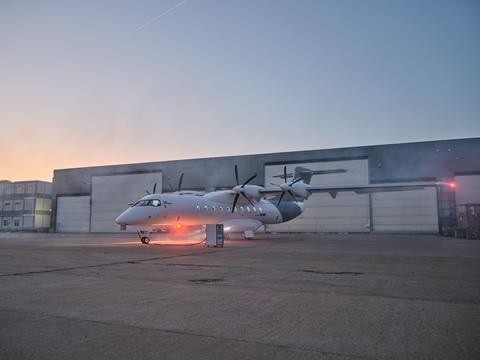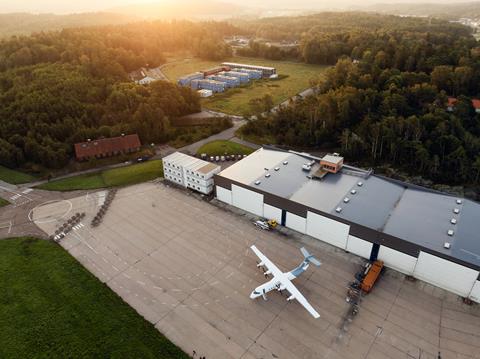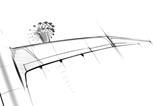Sweden’s Heart Aerospace has unveiled its first full-scale flying demonstrator – the Heart Experimental 1 (HX-1) – a stepping-stone on the way to developing its hybrid-electric ES-30, an aircraft only announced two years ago.
However, service entry for the 30-seater has slipped by around a year from its most recent 2028 target.

Embodying the ES-30’s latest configuration – the iteration disclosed in 2022 featured strut-braced wings and a battery storage bay below the fuselage – the HX-1, revealed on 12 September, has been built largely in-house at Heart’s Gothenburg Save airport facility.
“It is a testament to the ingenuity and dedication of our team that we’re able to roll out a 30-seat aircraft demonstrator with a brand-new propulsion system, largely in-house, in less than two years,” says Anders Forslund, co-founder and chief executive of Heart.
To be used initially for operational ground tests – charging, taxiing, and turnaround procedures, for example – the 32m (105ft)-wingspan HX-1 is scheduled to perform its first flight in the second quarter of 2025 from an undisclosed site in the USA.
The maiden sortie will be flown solely on electric power as the HX-1 is not fitted with thermal engines.
It will be followed in 2026 by a flight of the HX-2, a pre-production prototype, which will “further mature the design and production methods based on lessons learned from its predecessor”, says Heart.
That aircraft will be the first to fly on hybrid-electric power and will demonstrate the company’s “independent hybrid” propulsion system – separate turboprop and electric engines.
In addition, it will feature the company’s latest design tweak, a newly disclosed nacelle configuration centred on the wing rather than below it.
This, it claims, will minimise the aerodynamic interference between the wing and nacelle at high angles of attack, enhancing short-field performance. The new nacelle will also improve lift generation during both the cruise and landing phases, says Heart.
“Our new nacelle integration design will be manufactured in-house, using automated composite technology, and incorporated on the HX-2,” says chief technology officer Ben Stabler.

But Heart’s target date for service-entry has slipped again. When it broke cover in 2021, the company was focused on the development of a full-electric 19-seater called the ES-19, with deliveries slated to start in 2026.
That goal was abandoned in 2022 when Heart announced it was switching its focus to the larger hybrid-electric ES-30, pushing service-entry out to 2028.
Heart no longer provides a specific date for the aircraft’s arrival, simply saying that it is “targeting type certification of the ES-30 by the end of the decade”. However, it clarifies that development is “tracking towards 2029”.
Announcing the change in configuration earlier this year, which included the new simplified propulsion system, Heart said it aimed to secure certification in 2028.
In addition to the aircraft itself, Heart is also focussed on “creating a state-of-the-art aircraft manufacturing process that takes advantage of the latest technologies in composite manufacturing and product lifecycle management.”
That will include “the establishment of a pilot manufacturing plant to accelerate prototyping toward the manufacturing of a fully conforming aircraft”, it says. No location for that facility has been disclosed, however.
“Developing innovative net-zero aerospace technologies demands a revolution in product development and manufacturing, much like what we’ve witnessed in the automotive and space industries,” says Stabler, who joined Heart in May and is based at its recently established research and development centre in El Segundo, California.
Heart’s programme is also benefitting from public money: Swedish innovation agency Vinnova has part-funded the HX-1’s development, while the US Federal Aviation Administration in August awarded the company a $4.1 million grant to develop the management system for the hybrid-electric propulsion under its Fuelling Aviation’s Sustainable Transition programme.
Additionally, Heart has recently carried out ground support procedure tests for electric aircraft in collaboration with carriers Braathens Regional Airlines (BRA) and SAS, alongside airport operator Swedavia.
The tests were conducted as part of the Swedish research project ELISE – a pan-industry effort to foster the development of electric aviation infrastructure in Sweden.
Both BRA and SAS have signed tentative agreements to acquire ES-30 aircraft.































